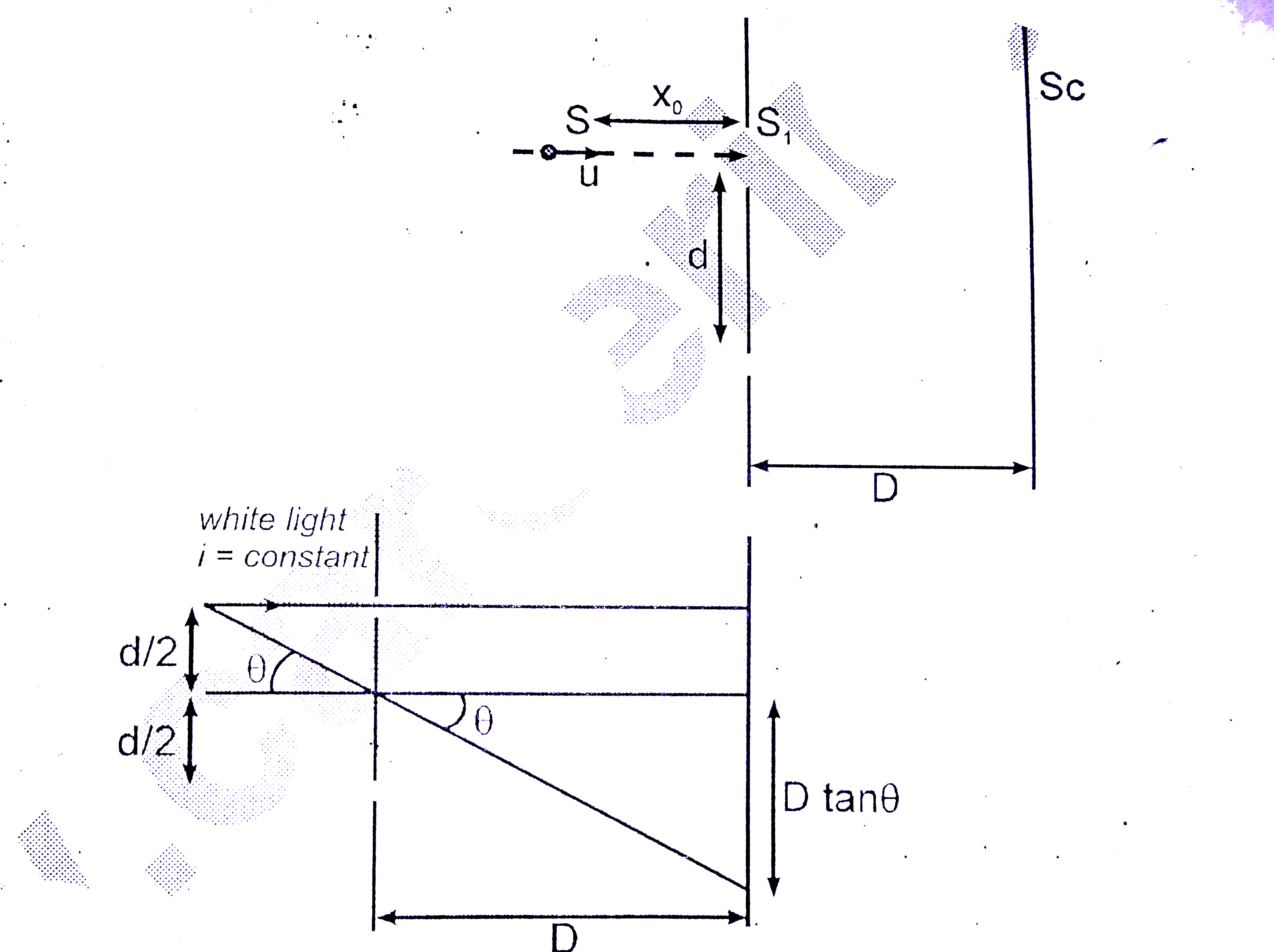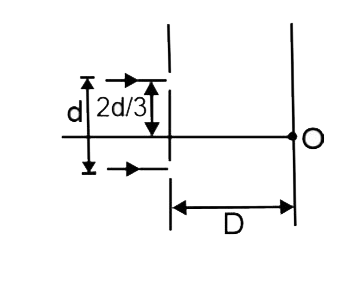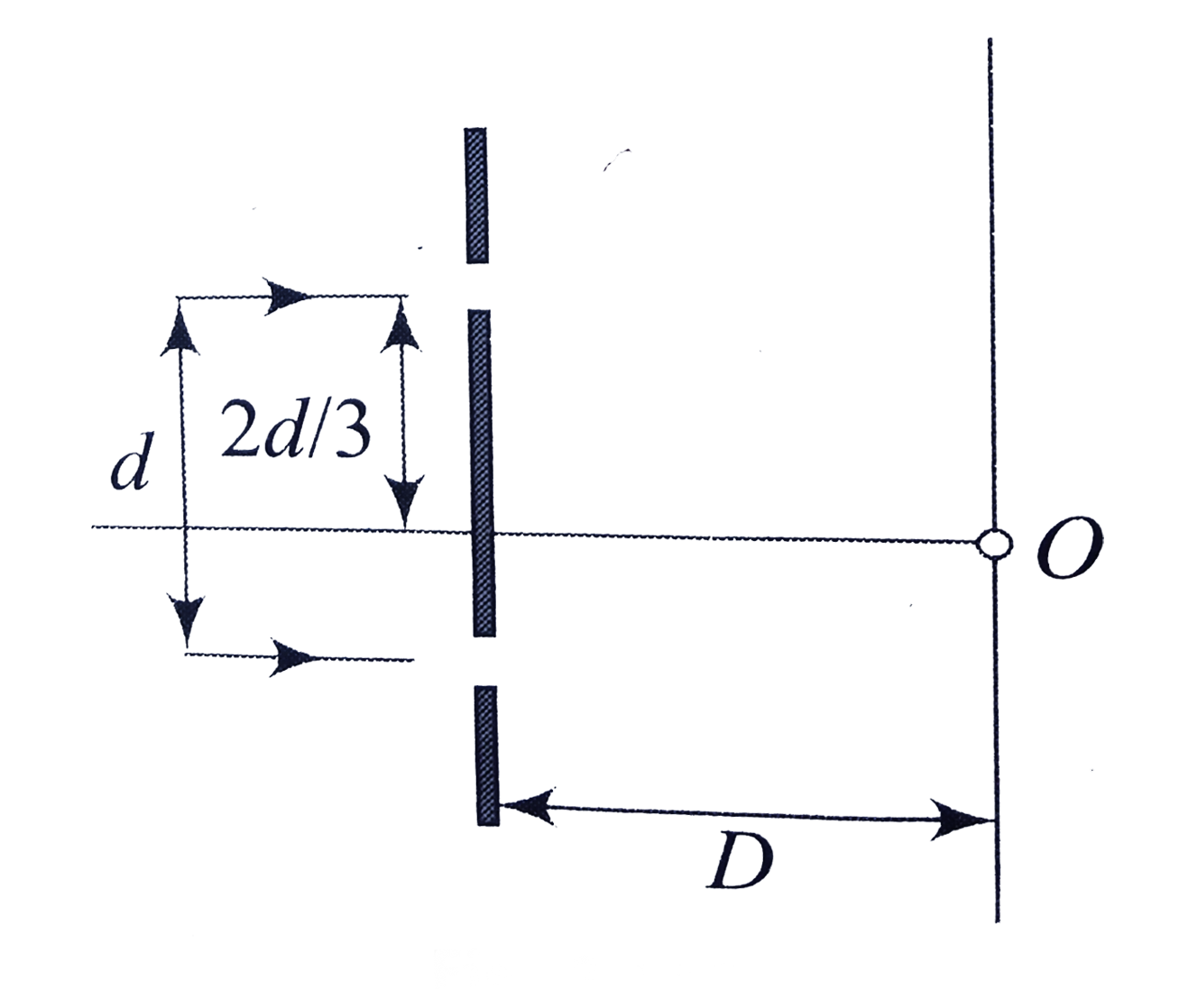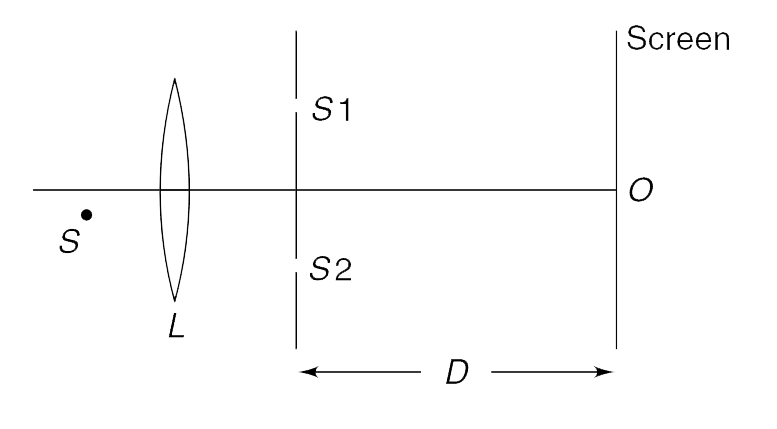In the figure shown S is the saurce of white light kept at a distance x0 frorn the plane of the slits. The source moves with a constant specd u towards the slits on the line perpendicular to the plane of the slits and passing through the slit S1. Find the instanteneous velocity (magnituce and direction). of the central maxima at time t having range 0≤t<<x0−du. Assume that D>>d.

tanθ=d2xandy0=Dtanθ=D.d2x
v0=dy0dt=−Dd2x2.dxdt⇒v0=Dd2x2.u V0=Ddu2(x0−ut)2(downwards)
Topper's Solved these Questions
Similar Questions
In the figure shown if a parallel beam of white light is incident on the plane of the slits then the distance of the white spot on the screen from O is [Assume <<D,λ<<d]

View Solution_E01_029_Q01.png)
In YDSE, the source placed symmetrically with respect to the slit is now moved parallel to the plane of the slits it is closer to the upper slit, as shown then
View Solution
Knowledge Check
_E01_029_Q01.png)
In YDSE, the source placed symmetrically with respect to the slit is now moved parallel to the plane of the slits it is closer to the upper slit, as shown thenAthe fringe width will increase and fringe pattern will shift downBthe fringe width will remain same but fringe pattern will shift upCthe fringe width will decrease and fringe pattern will shift down.Dthe fringe width will remain same but fringe pattern will shift down.In figure, if a parallel beam of white light is incident on the plane of the slit, then the distance of the nearest white spot on the screen form O is [assume d<<D,λ<<D]
 A0Bd/2Cd/3Dd/6
A0Bd/2Cd/3Dd/6In Young’s double-slit experiment, the distance between the two identical slits is 6.1 times larger than the slit width. Then the number of intensity maxima observed within the central maximum of the single-slit diffraction pattern is
A3B6C24D12
In figure, if a parallel beam of white light is incident on the plane of the slit, then the distance of the nearest white spot on the screen form O is [assume d<<D,λ<<D]

View SolutionIn a Young's double slit experiment , the slits are Kept 2mm apart and the screen is positioned 140cm away from the plane of the slits. The slits are illuminatedd with light of wavelength 600nm. Find the distance of the third brite fringe. From the central maximum . in the interface pattern obtained on the screen frings from the central maximum. 3
View SolutionIn a Young's double slit experiment , the slits are Kept 2mm apart and the screen is positioned 140cm away from the plane of the slits. The slits are illuminatedd with light of wavelength 600nm. Find the distance of the third brite fringe. From the central maximum . in the interface pattern obtained on the screen frings from the central maximum. 3
View SolutionIn a young’s double slit experiment the distance between slits S1 and S2 is d and distance of slit plane from the screen is D(>>d). The point source of light (S) is placed a distance d2 below the principal axis in the focal plane of the convex lens (L). The slits S1 and S2 are located symmetrically with respect to the principal axis of the lens. Focal length of the lens is f(>>d).
Find the distance of the central maxima of the fringe pattern from the centre (O) of the screen.
View SolutionIn Young’s double-slit experiment, the distance between the two identical slits is 6.1 times larger than the slit width. Then the number of intensity maxima observed within the central maximum of the single-slit diffraction pattern is
View Solution
